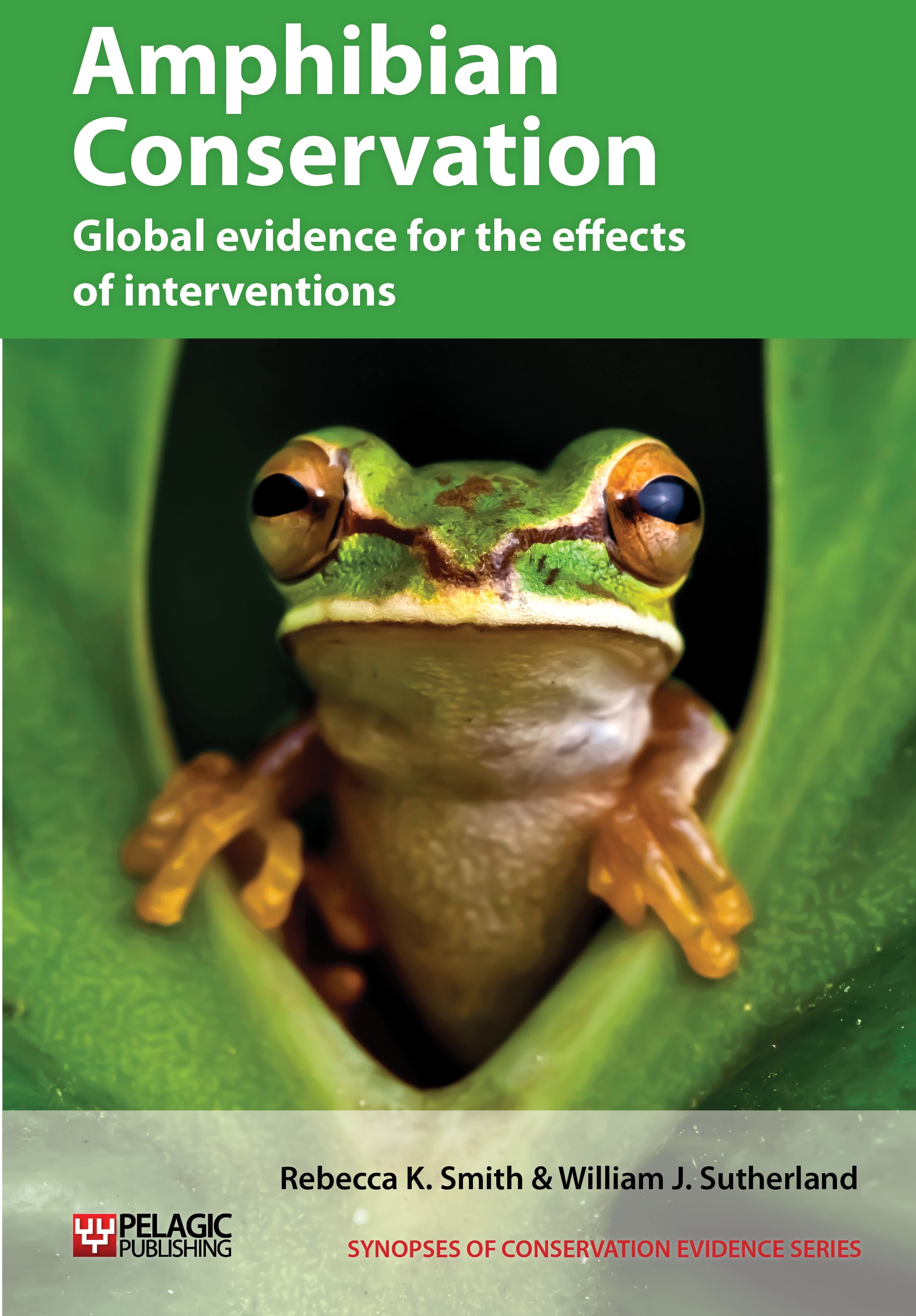Use gloves to handle amphibians
-
Overall effectiveness category Unknown effectiveness (limited evidence)
-
Number of studies: 4
View assessment score
Hide assessment score
How is the evidence assessed?
-
Effectiveness
9% -
Certainty
35% -
Harms
65%
Study locations
Supporting evidence from individual studies
A small, replicated study in a laboratory (Sobotka & Rahwan 1994) found that latex, but not vinyl gloves caused death in African clawed frog Xenopus laevis tadpoles. All tadpoles exposed to unrinsed and rinsed latex gloves died within 24 hours, most within two hours. None of the tadpoles exposed to vinyl gloves showed adverse effects. Four of 12 tadpoles in tanks cleaned with latex gloves died within four hours of exposure. Between 10 and 20 tadpoles were placed in each of three 700 ml beakers containing water at 20°C. One of the following gloves was partially immersed for 24 hours in each beaker: unrinsed latex (powder-free); rinsed latex; or rinsed vinyl gloves. Rinsing was done in deionized distilled water to remove any powder.
Study and other actions testedA small, replicated study in a laboratory in Austria (Gutleb et al. 2001) found that mortality of African clawed frog Xenopus laevis and common frog Rana temporaria tadpoles increased with increasing concentrations of latex and vinyl glove contaminated water. All African clawed frog tadpoles died within 12 hours when exposed to dilutions of 1:350 or less and 50% died in dilutions of 1:425 (i.e. one glove in 128 litres). Surviving tadpoles showed no symptoms. All common frog tadpoles died in dilutions of 1:600 or less (i.e. one glove in 195 litres). African clawed frog tadpoles survived in vinyl glove dilutions lower than 1:4, but showed 100% mortality in dilutions of 1:3 or less. The latex gloves used in the experiment were the most toxic of the materials (latex, vinyl, nitril) and brands tested. Ten latex and vinyl gloves were soaked in water for 24 hours at 20 °C. Solutions were further diluted to a maximum of 1:900 using tap water. Ten African clawed frog and 10 common frog tadpoles were placed in each solution (water volume 700 ml). Mortality was scored after 12 hours of exposure.
Study and other actions testedA replicated, controlled study in the laboratory and in the field in Australia (Cashins, Alford & Skerrati 2008) found that unrinsed latex or nitrile gloves caused death of green-eyed tree frog Litoria genimaculata and cane toad Bufo marinus tadpoles and unrinsed vinyl gloves death of waterfall frogs Litoria nannotis. Direct or indirect contact with unrinsed latex gloves caused 72% mortality of green-eyed tree frog tadpoles (n = 36). Unrinsed latex or nitrile gloves caused 10–100% mortality of non-native cane toad tadpoles (n = 10). Rapid, localized tissue damage was observed at the point of contact. In the laboratory, no adverse effects were seen 24 hours after handling with unrinsed vinyl gloves in green-eyed tree frogs (n = 23), cane toads (n = 20) or waterfall frogs Litoria nannotis (n = 32). However, in the field 40% of waterfall frogs handled with unrinsed gloves died within one hour. The remainder and those handled with rinsed vinyl gloves showed no effects. Cane toad tadpoles handled with unrinsed vinyl gloves or bare hands (n = 10–20) showed no adverse effects. In the laboratory, tadpoles were handled for 30–90 seconds with unrinsed latex or vinyl gloves, and nitrile or no gloves for cane toads. In the field, 30 waterfall frog tadpoles were handled with unrinsed or rinsed vinyl gloves or bare hands.
Study and other actions testedA review of 22 amphibian species in laboratory experiments, in the field and in zoo settings in Canada and the USA (Greer et al. 2009) found that there were no adverse effects of handling amphibians using disposable gloves. No effects were noticed in wood frogs Rana sylvatica (n = 240), Arizona tiger salamanders Ambystoma tigrinum nebulosum (n = 1372) or gray tiger salamanders Ambystoma tigrinum diaboli (n = 397) handled for up to three minutes, weekly for 4–20 weeks in laboratories. The same was true for wood frogs (n = 32), western toads Bufo boreas (n = 98), boreal choral frogs Pseudacris maculata (n = 4) and Arizona tiger salamanders Ambytoma tirgrinum nebulosum (n = 2309) handled for up to two minutes in the field. In addition, no symptoms or deaths were ever detected in the larvae of 17 amphibian species that had been repeatedly handled with gloves at Detroit Zoo.
Study and other actions tested
Where has this evidence come from?
List of journals searched by synopsis
All the journals searched for all synopses
This Action forms part of the Action Synopsis:
Amphibian Conservation
Amphibian Conservation - Published 2014
Amphibian Synopsis





)_2023.JPG)














